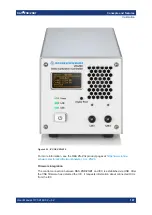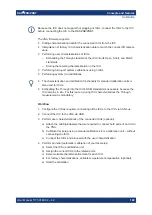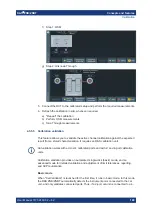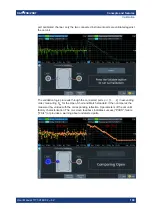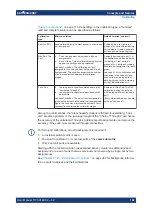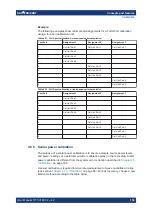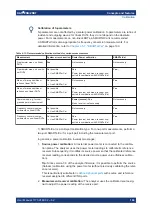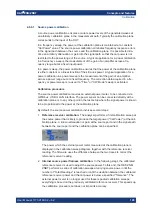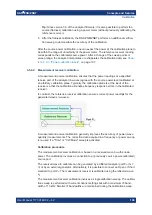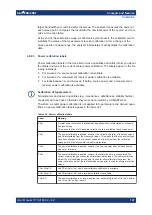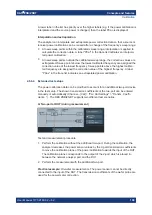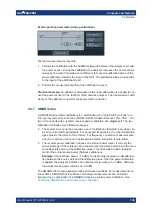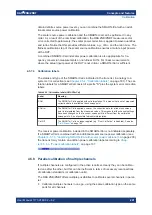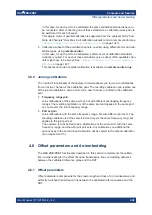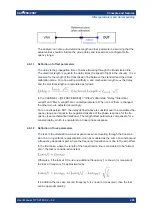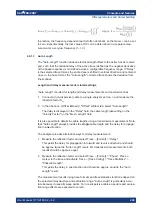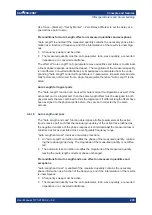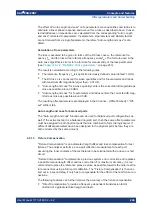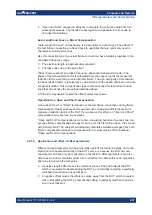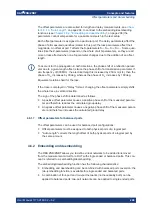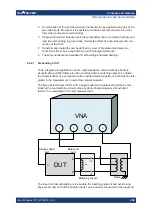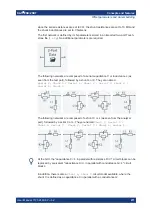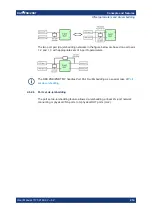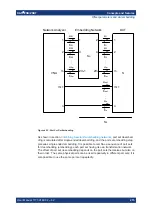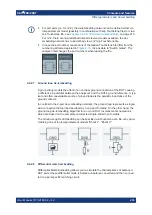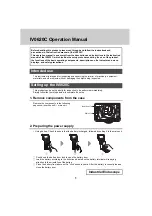
Concepts and features
R&S
®
ZNB/ZNBT
201
User Manual 1173.9163.02 ─ 62
obtain definite source power levels, you can combine the SMARTerCal with an addi-
tional scalar source power calibration.
The scalar source power calibration and the SMARTerCal can be performed in any
order. As a result of the combined calibration, the R&S
ZNB/ZNBT measures vector
error-corrected S-parameters; the scalar power correction is applied to wave quantities
and ratios. Notice that this provides different values, e.g., of S
21
and the ratio b
2
/a
1
. The
flatness calibration step of the scalar source calibration ensures accurate input powers
at the DUT.
A combined SMARTerCal and scalar power calibration is also appropriate for fre-
quency conversion measurements on non-linear DUTs. For linear measurements,
where the actual input power at the DUT is not critical, a SMARTerCal is sufficient.
4.5.7.4
Calibration labels
The status and type of the SMARTerCal is indicated in the trace list, in analogy to a
system error correction (see
Chapter 4.5.4, "Calibration labels"
ibration labels for a SMARTerCal consist of a prefix "S" plus the system error correction
labels.
Table 4-16: Calibration labels (SMARTerCal)
Label
Meaning
SCal
The SMARTer Cal is applied without interpolation. This means that a set of measured
correction data is available at each sweep point.
SCal int
The SMARTer Cal is applied, however, the correction data for at least one sweep
point is interpolated from the measured values. This means that the channel settings
have been changed so that a current sweep point is different from the calibrated
sweep points. It is not possible to disable interpolation.
Cal Off
The SMARTer Cal is no longer applied (e.g. "User Cal Active" is disabled). See also
The receiver power calibration included in the SMARTerCal is not indicated separately.
If a SMARTerCal is combined with an additional scalar source power calibration (see
Chapter 4.5.7.3, "Combining SMARTerCal with scalar power calibration"
the trace list may contain an addition power calibration label according to
ter 4.5.6.3, "Power calibration labels"
4.5.8
Parallel calibration of multiple channels
If multiple channels are configured in the active recall set, clearly they can be calibra-
ted one after the other, but this can be inefficient in terms of necessary reconnections
of calibration standards (or calibration units).
The R&S
ZNB/ZNBT offers multiple possibilities to calibrate several channels in paral-
lel:
●
Calibrate multiple channels in one go, using the same calibration type on the same
ports for all channels
Calibration

